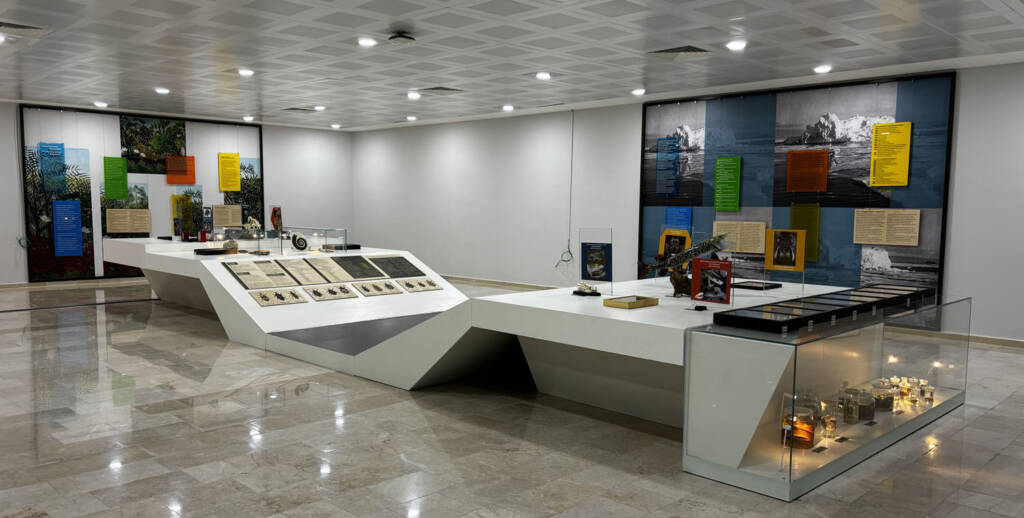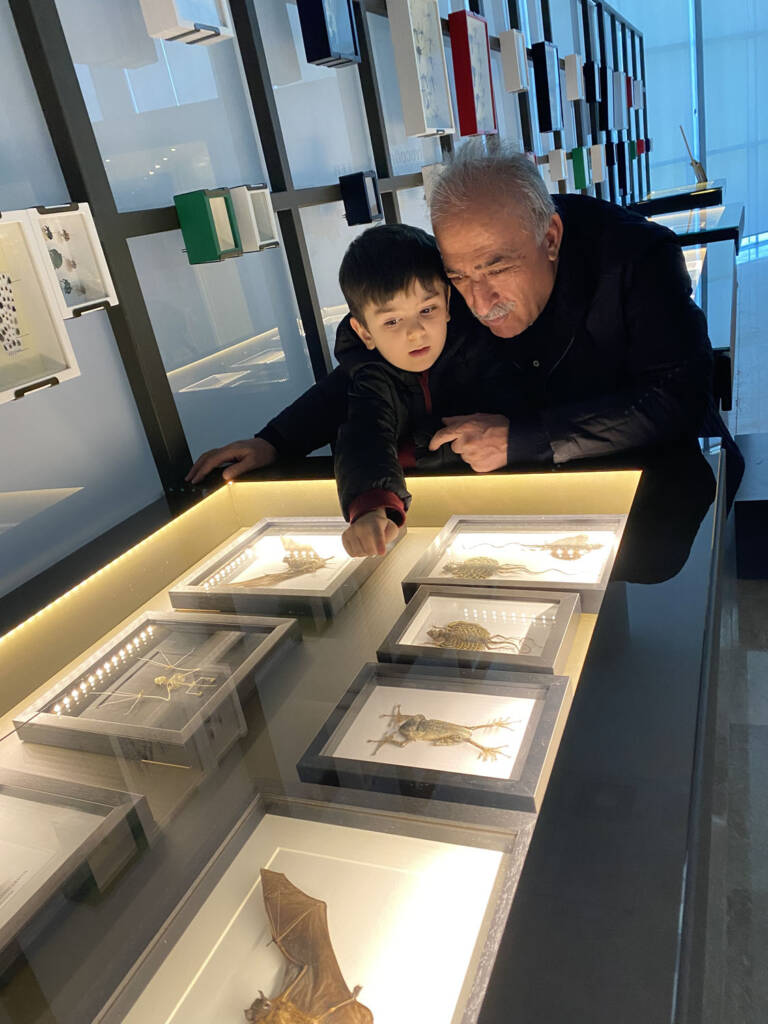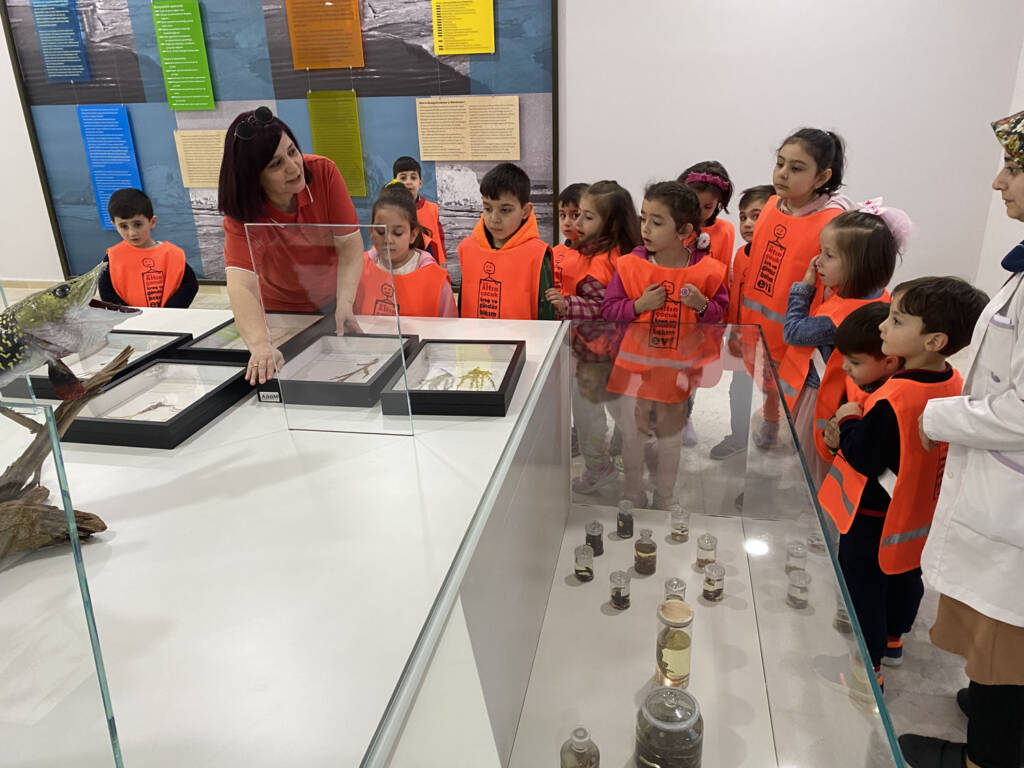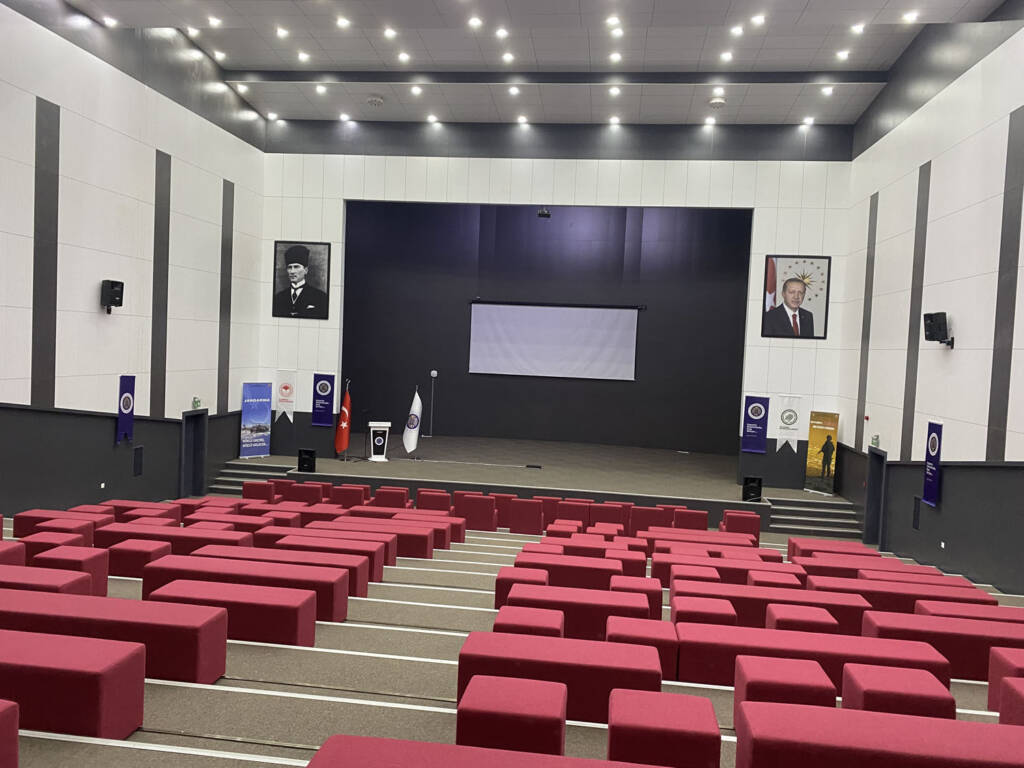
Interactive education on biodiversity involves engaging and participatory approaches to teaching individuals about the diversity of life on Earth, the interconnectedness of ecosystems, and the importance of preserving biodiversity.
In order to create interactive educational experiences on biodiversity, documentaries with educational content are currently being presented to student groups at the Biodiversity Conference Hall within ABBM. All exhibitions and educational environments prepared in the museum are equipped with collection samples and information panels. The procurement process of digital platforms, screens and kiosks, which is an advanced stage of the project, continues. When the project is completed, our interactive educational environment and programs will become more useful for students.

Ideal for environments, programs and platforms in the planning stages, our goals are:
- Visiting students explore interactive maps and virtual presentations of biodiversity hotspots
- Online or desktop digital platforms that simulate ecological processes, population dynamics, and the impact of human activities on biodiversity;
- Involvement in programs where students can contribute to real scientific research by collecting data on local biodiversity;
- Students should be involved in observing plants and animals in nature, recording and sharing them;
- In interactive workshops and laboratories, students can examine samples, prepare collections of biodiversity in local habitats, and apply hands-on workshops or laboratory studies where they can examine them;
- Involvement in learning stations with interactive displays, models, and multimedia resources;
- Students should prepare presentations that emphasize the interconnectedness of species and ecosystems;
- Online tests or quizzes that test students' knowledge of biodiversity, conservation efforts, and endangered species;
- Organizing student seminars, panels and congresses with scientists, conservationists or ecologists to hold interactive webinars or question-answer sessions with students;
- Encouraging students to actively participate in local environmental initiatives such as nature/environment clean-up and habitat restoration projects;
By incorporating these interactive elements, educators can make biodiversity education more engaging, memorable, and effective for students of all ages.





